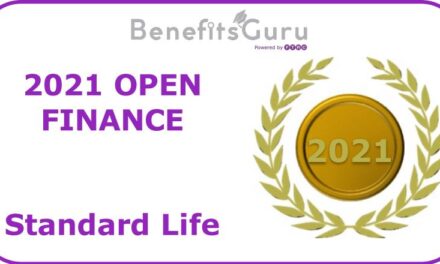Continuing from our insight last week, another form of ISA is the Lifetime ISA account. Lifetime ISAs were launched by the government in April 2017. Under a Lifetime ISA, consumers can save up to £4,000 a year and the state will add 25% on top before interest or growth. The bonus is paid until the account holder reaches the age of 50 and is paid monthly into the LISA account. For stocks and shares LISAs the bonus is paid on contribution levels. Under the current rules the maximum bonus achievable from the state through a LISA over the allowable lifetime of contributions (age 18 to 50) is £33,000.
Unless the account holder is over 60 years old or buying a first property, previously the state charged 25% of the amount withdrawn. Under the current rules extended under the Coronavirus pandemic, LISA holders who withdraw money will face a reduced 20% penalty for doing so under April 2022.
However, LISAs have received mixed reviews and have not proven immensely popular with savers.
Our data shows that only Cushon and Hargreaves Lansdown offer a Lifetime ISA to their workplace pension members, both offering their own products.
Cushon members can make contributions at source via a payroll deduction and can also have additional payments made by their employer. They can also make additional payments via the app/portal, direct bank transfer, the employer/payroll or via direct contact such as a call or email instruction.
Hargreaves Lansdown members can make additional payments to their LISA but only via the app/portal or via direct contact.
Both Hargreaves Lansdown and Cushon allow members to apply for a contribution holiday.
Only Cushon allows LISA savers to accept a transfer from another ISA.
Guaranteed Investment Accounts, otherwise known as GIAs, are widely offered by workplace pension providers. Only Aegon Master Trust, Aviva Designer and Royal London do not offer them.
Whilst there are no tax benefits for investing in a GIA, they are popular flexible savings option for those who want to invest beyond pension and ISA tax free allowances. As an investment account, savers can choose where they want their funds to be invested and there is no restriction on the amount that can be invested or withdrawn. They are often used to “feed” ISAs and pensions each tax year, moving money into more tax efficient wrappers.
Money saved within a GIA can also utilise the capital gains tax allowance. The capital gains tax threshold is currently £12,300 for the 2020/21 tax year, meaning this amount of gains (investment gains or interest) can be made each year without paying tax.
Other than Mercer Master Trust Aviva, Mercer Master Trust Scottish Widows, Standard Life and Standard Life DC Master Trust, the GIAs offered by workplace pension providers are all their own product.
Only five GIAs on offer do not allow contributions to be made at source via a payroll deduction. These providers are Legal & General, Legal & General Master Trust, Standard Life, Standard Life DC Master Trust and True Potential.
All GIAs on offer allow the member to make additional payments when wanted. Aegon Workplace ARC, Aviva My Money, Aviva My Money Master Trust, Cushon, Fidelity, Fidelity Master Trust and Hargreaves Lansdown also allow additional payments to be made by the employer into the GIA.
Most GIAs on offer from workplace pension providers also facilitate payment holidays, with members having the freedom to pause savings. Those who do not are Mercer Master Trust Aviva, Mercer Master Trust Scottish Widows, Standard Life and Standard Life DC Master Trust.
Arguably either the most complicated or most simple savings vehicle of all dependent on your perspective is the cash deposit account.
A cash deposit account is an all-in-one investment solution which gives the workplace pension members a choice of pots all within the one account. The member can choose to invest in any combination of pots which can offer the choice of multiple investment vehicles but he most common vehicle on offer through cash deposit accounts is the Cash ISA.
Cash deposit accounts can be interest earning (where there is generally one interest rate set across all pots) or non-interest earning. They are easy access deposit accounts and therefore workplace pension members who use them can withdraw their money whenever needed, often subject to penalties.
Only Fidelity and Fidelity Master Trust offer a non-interest earning cash deposit account. There are four providers who offer interest earning cash deposit accounts: Hargreaves Lansdown, Scottish Widows, Scottish Widows GSIPP and Scottish Widows Master Trust. All offer their own products. All allow the member to make additional payments when wanted.
Hargreaves Lansdown also allow members investing in an interest earning cash deposit account to apply a contribution holiday to pause savings when needed.
Overall, our data shows that there are many options available to workplace pension members who want to access savings vehicles via their workplace pension provider.
However, it is worth noting that both Royal London and Aviva Designer do not offer any additional savings vehicles. This may diminish the attractiveness of their propositions to employers for whom, as we saw in our previous insight, almost three quarters of their employees want them to offer a workplace savings scheme in addition to a pension.







